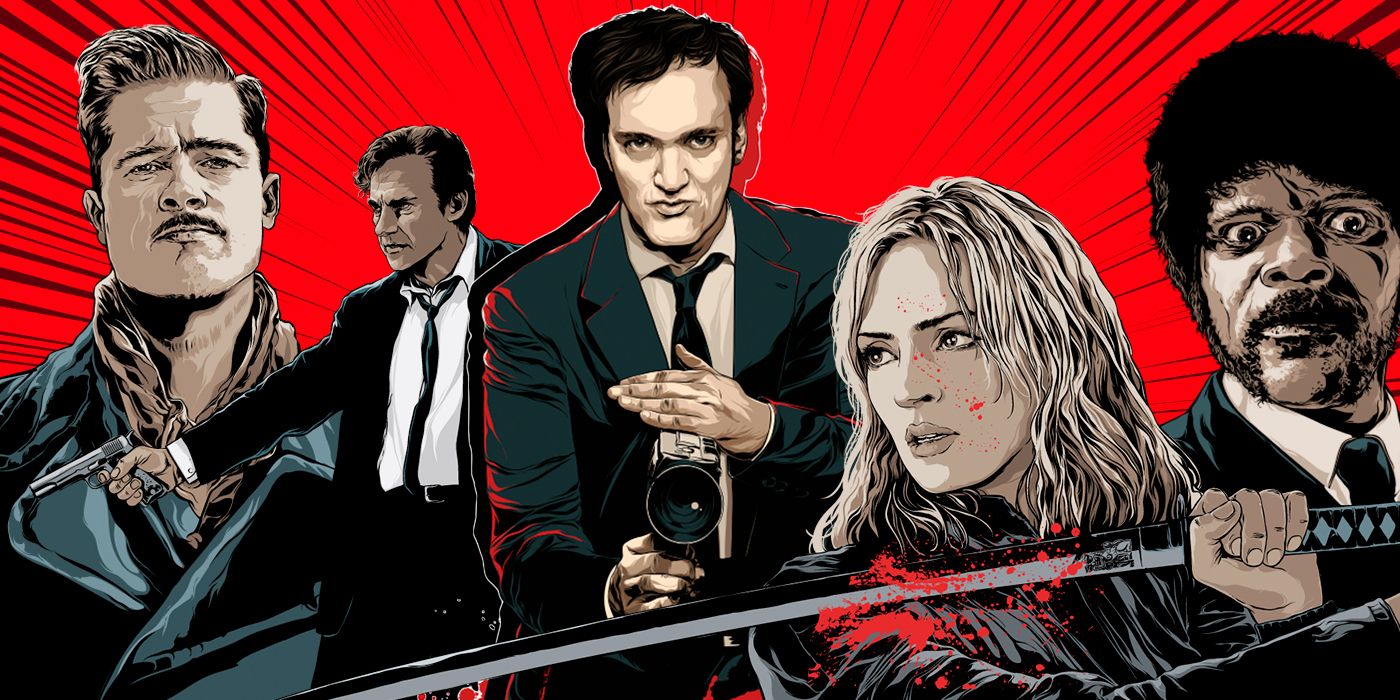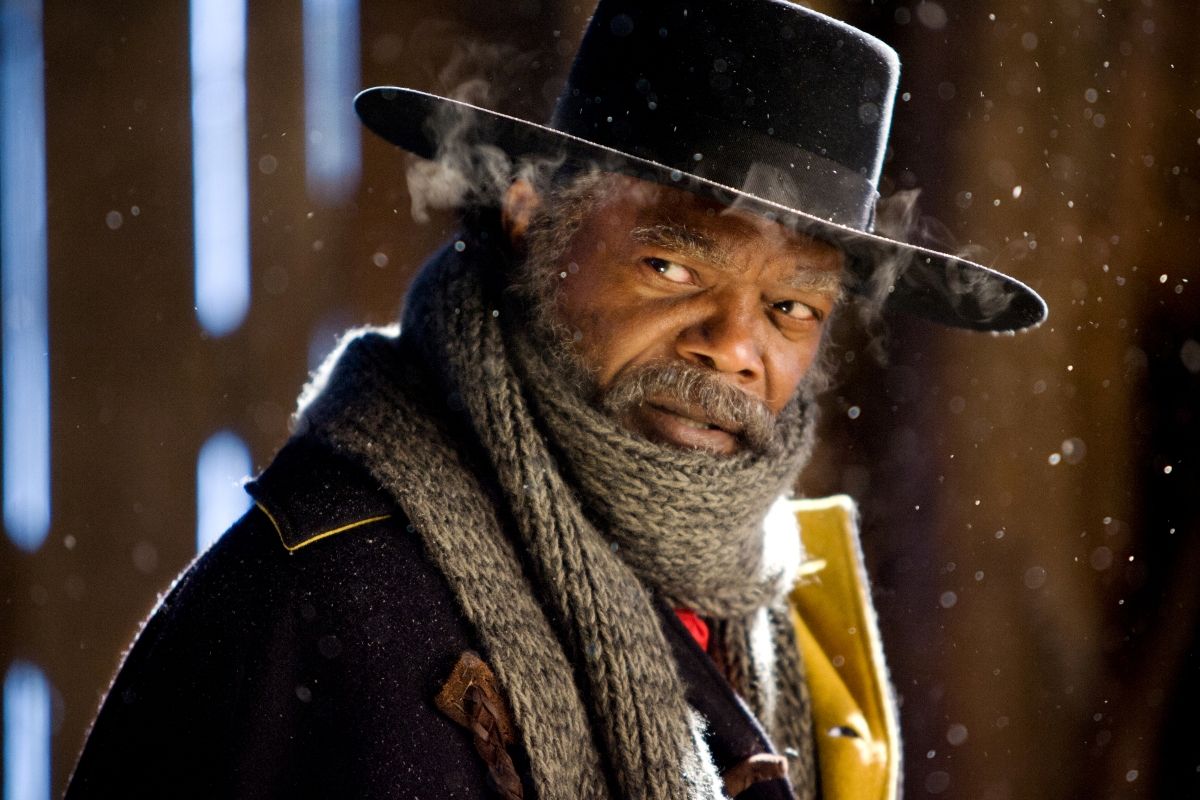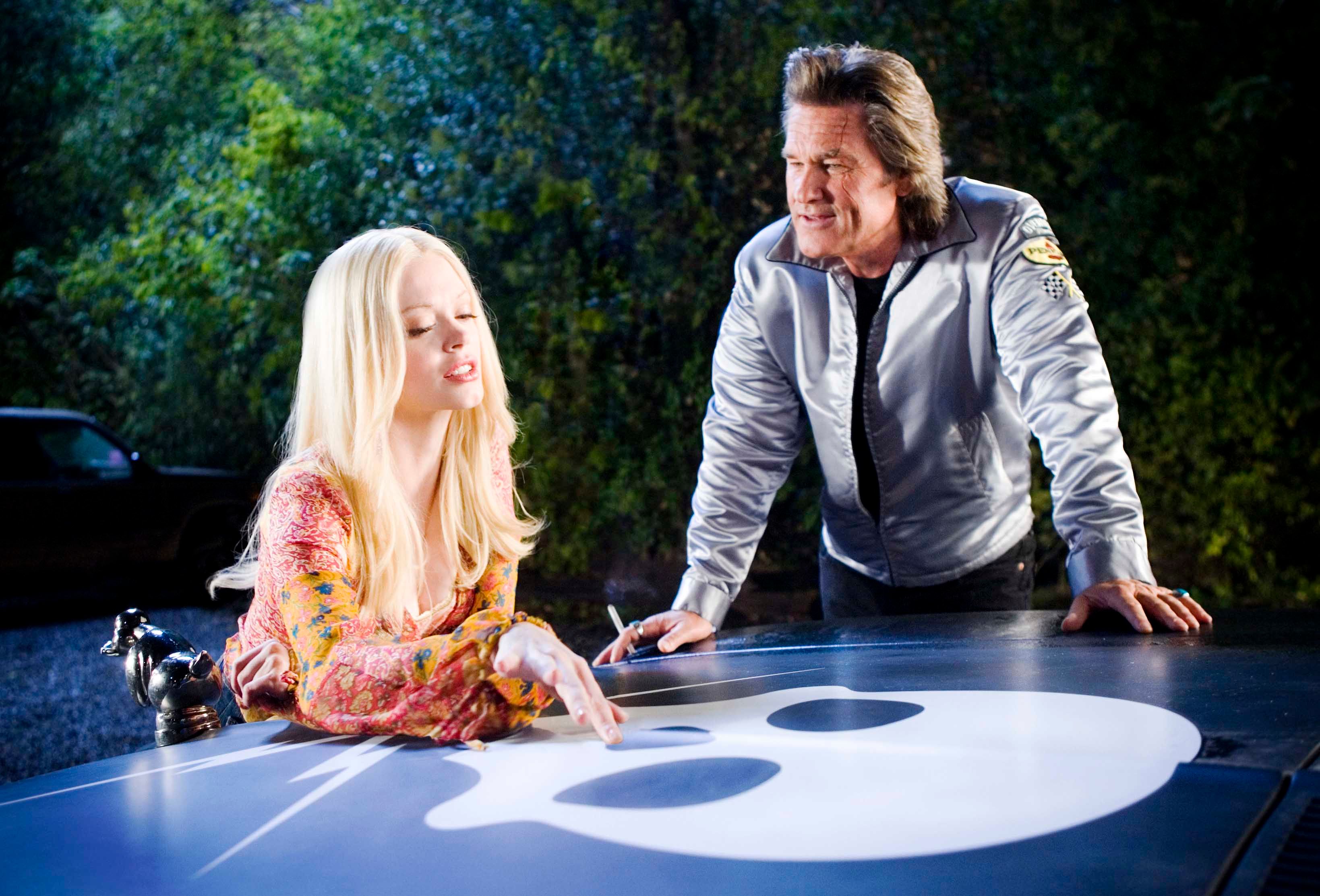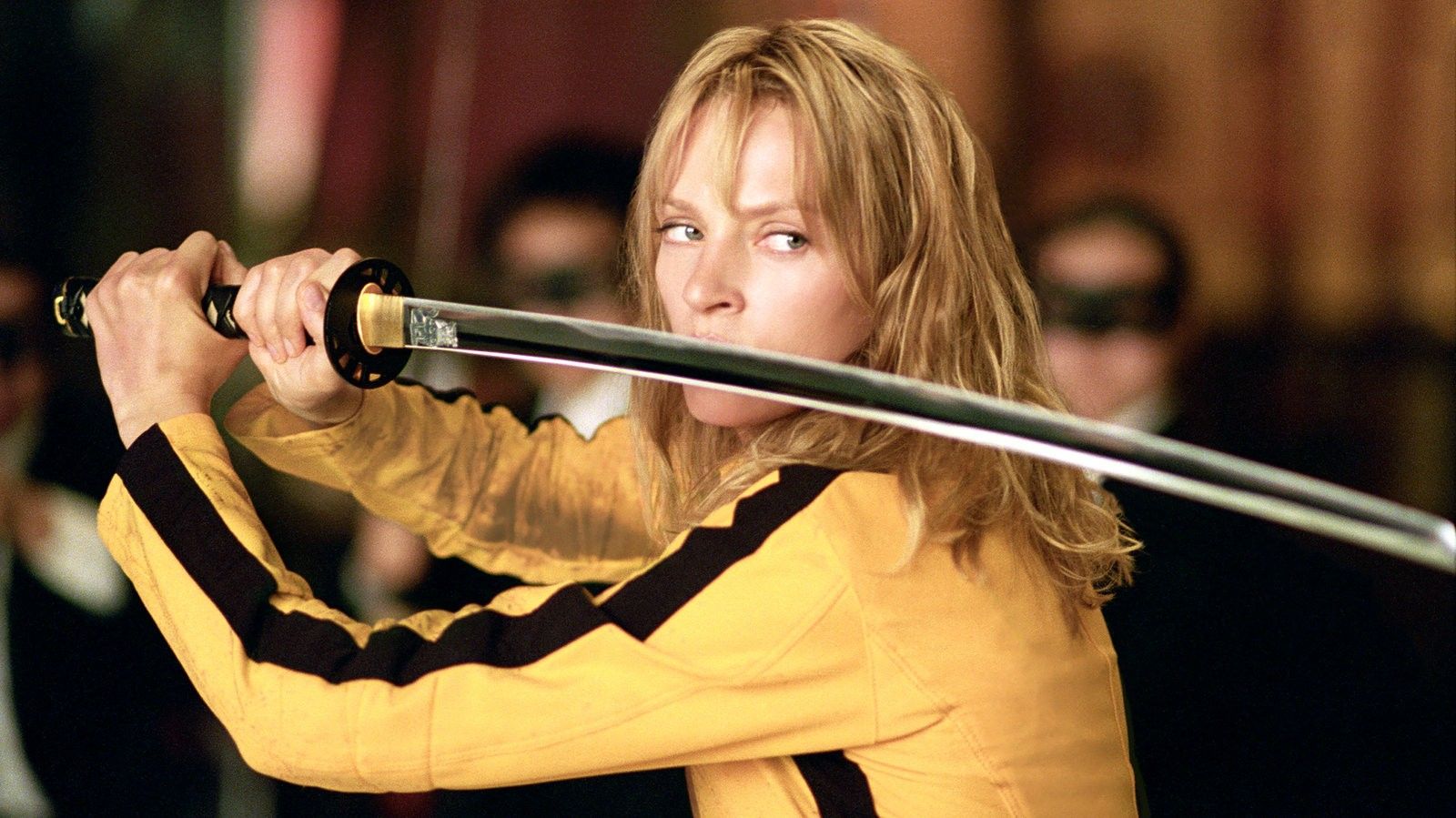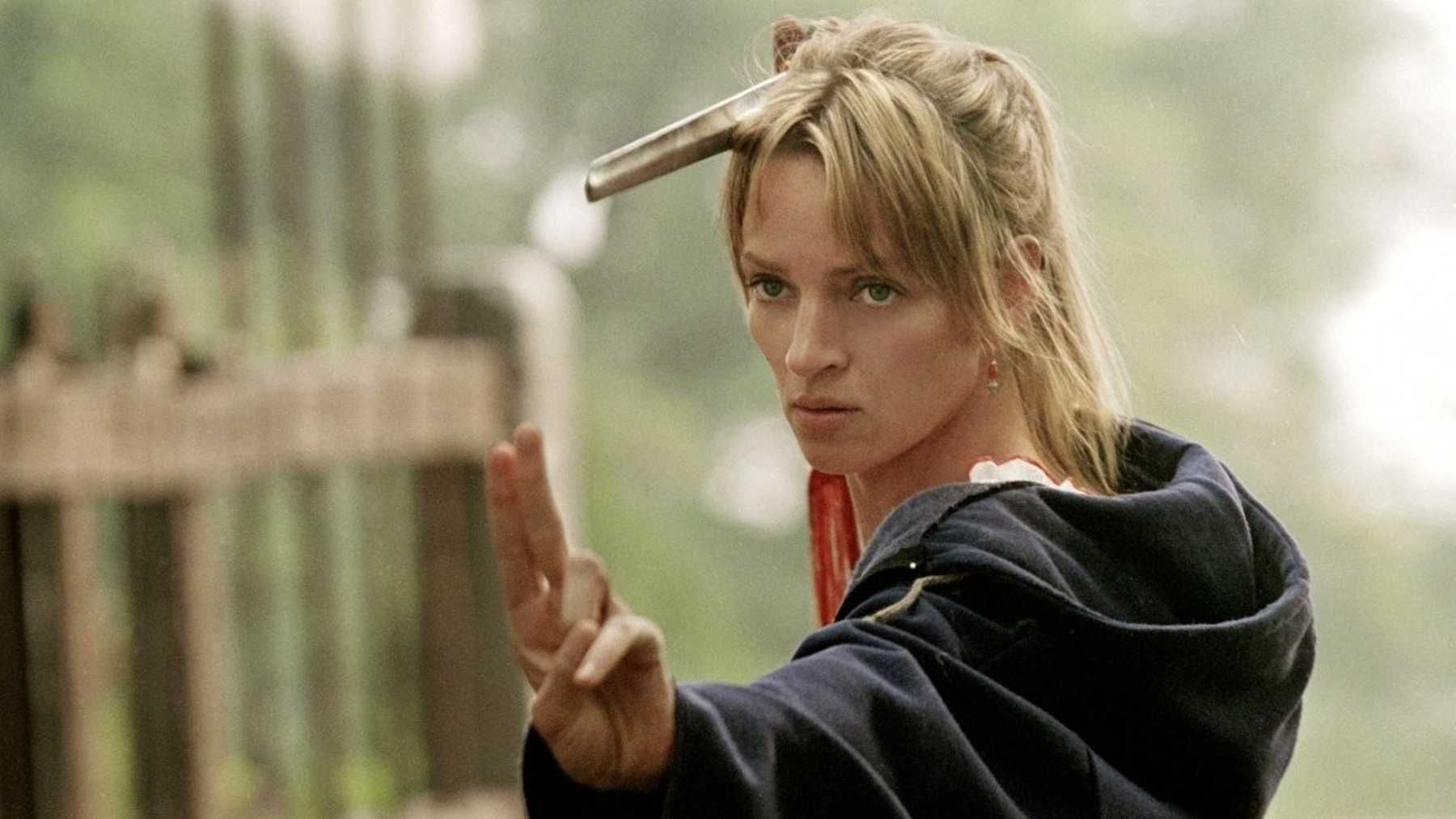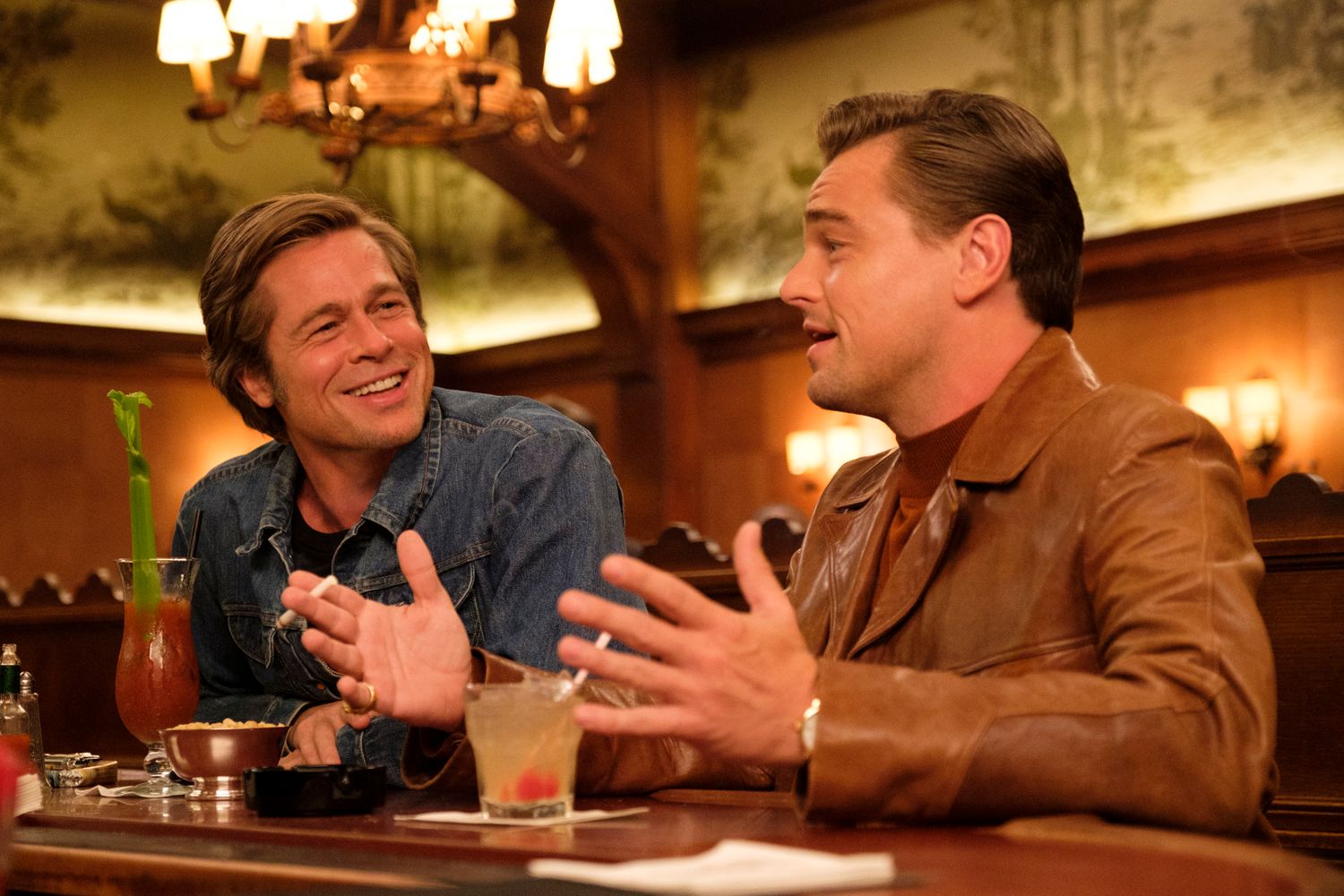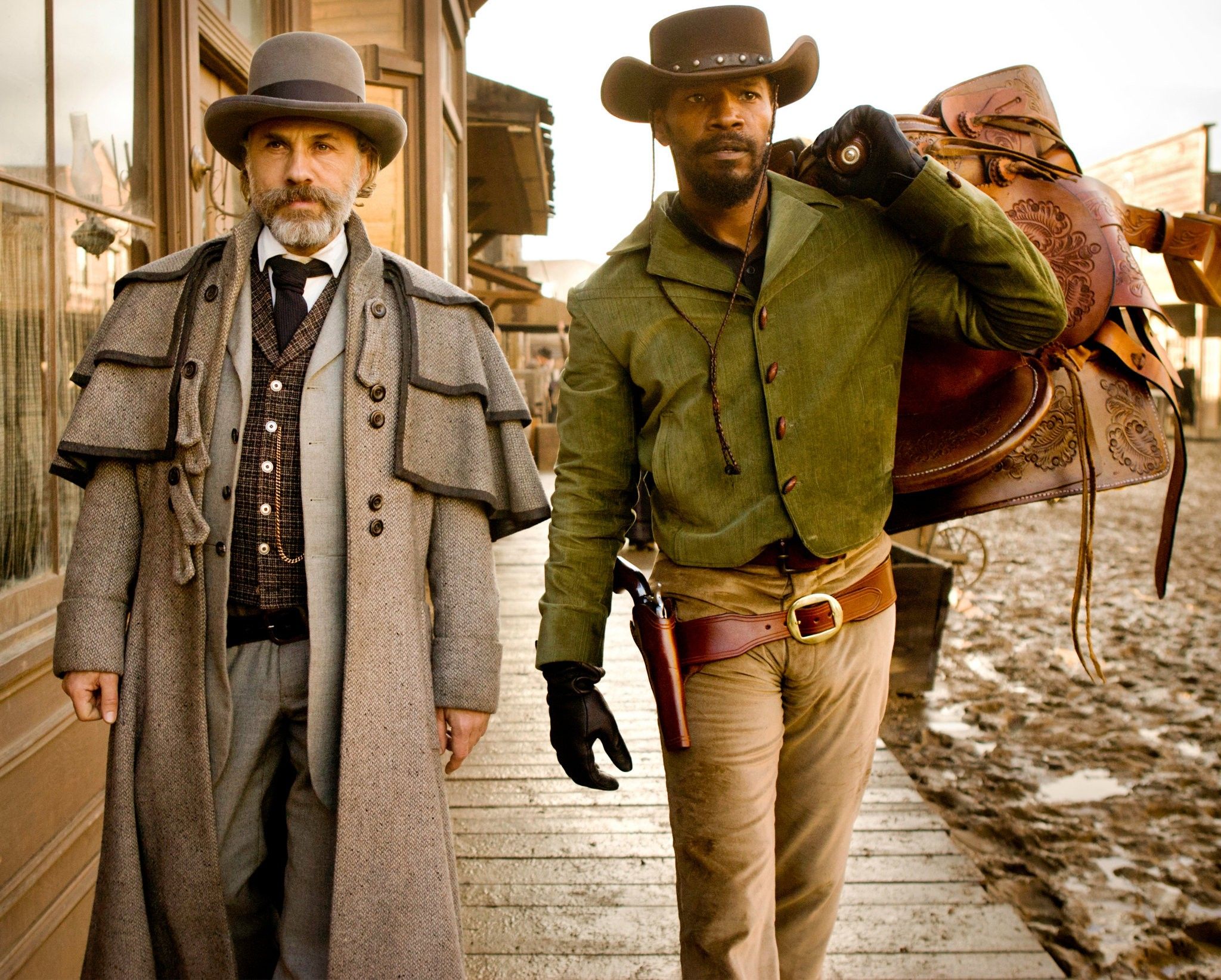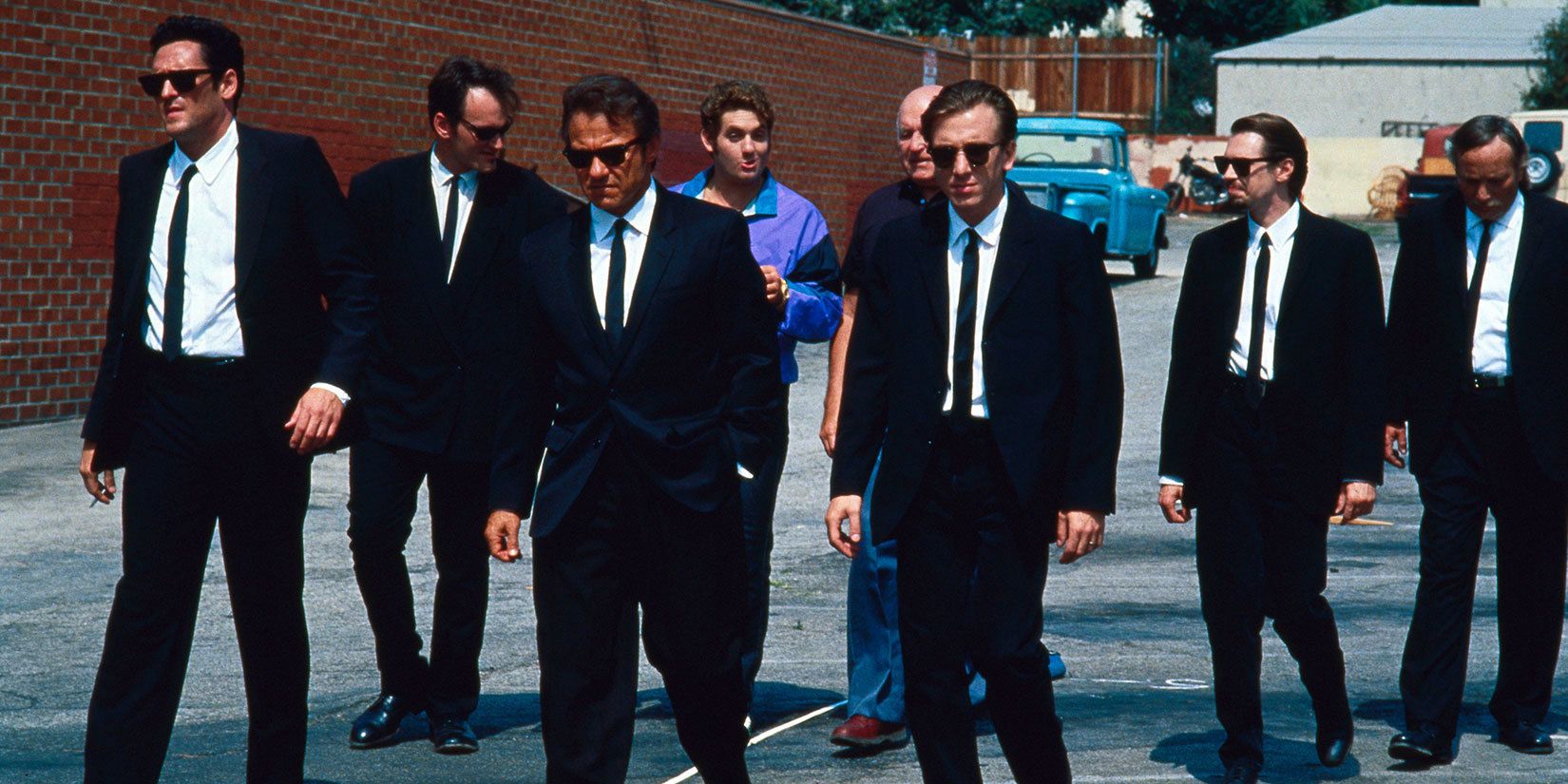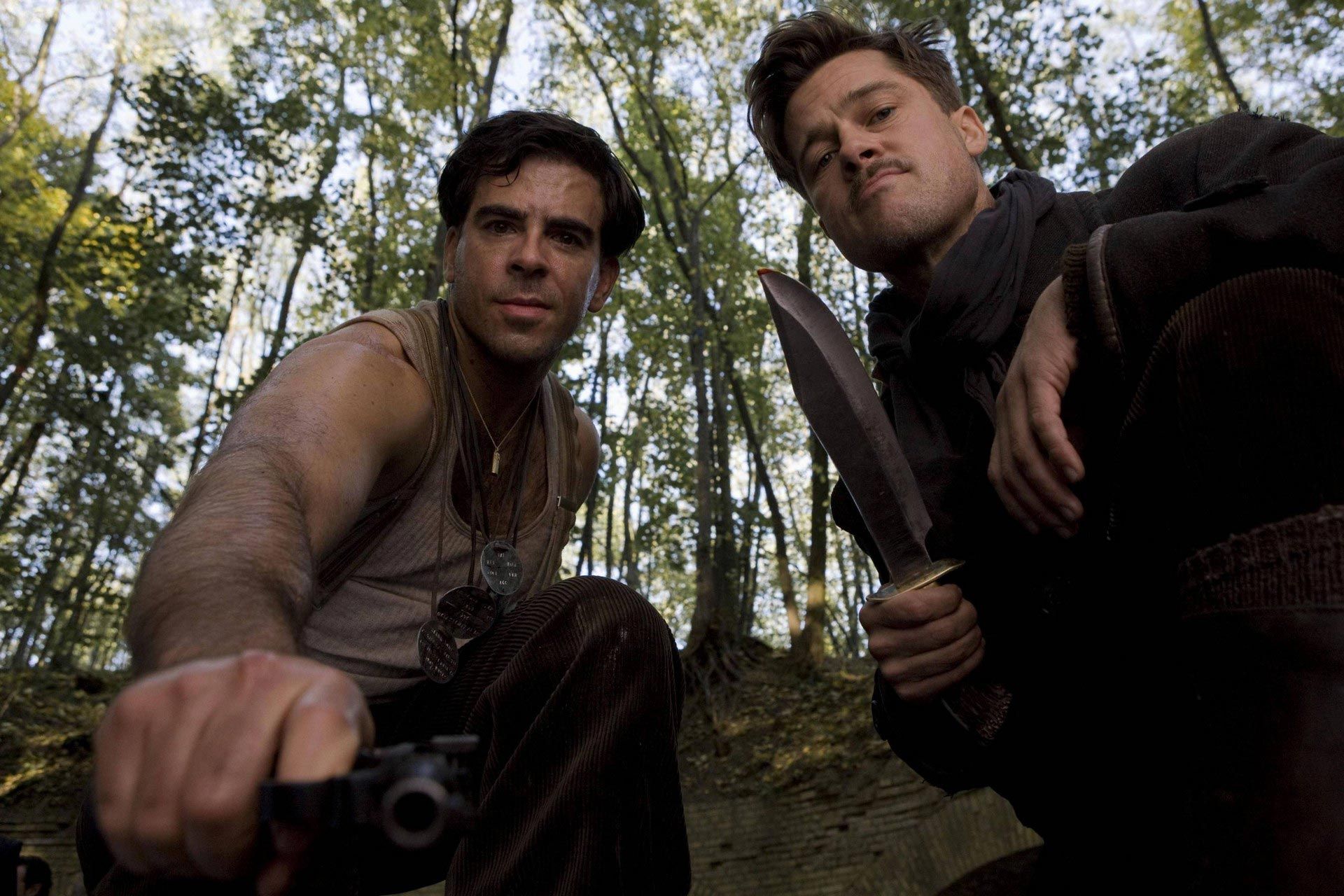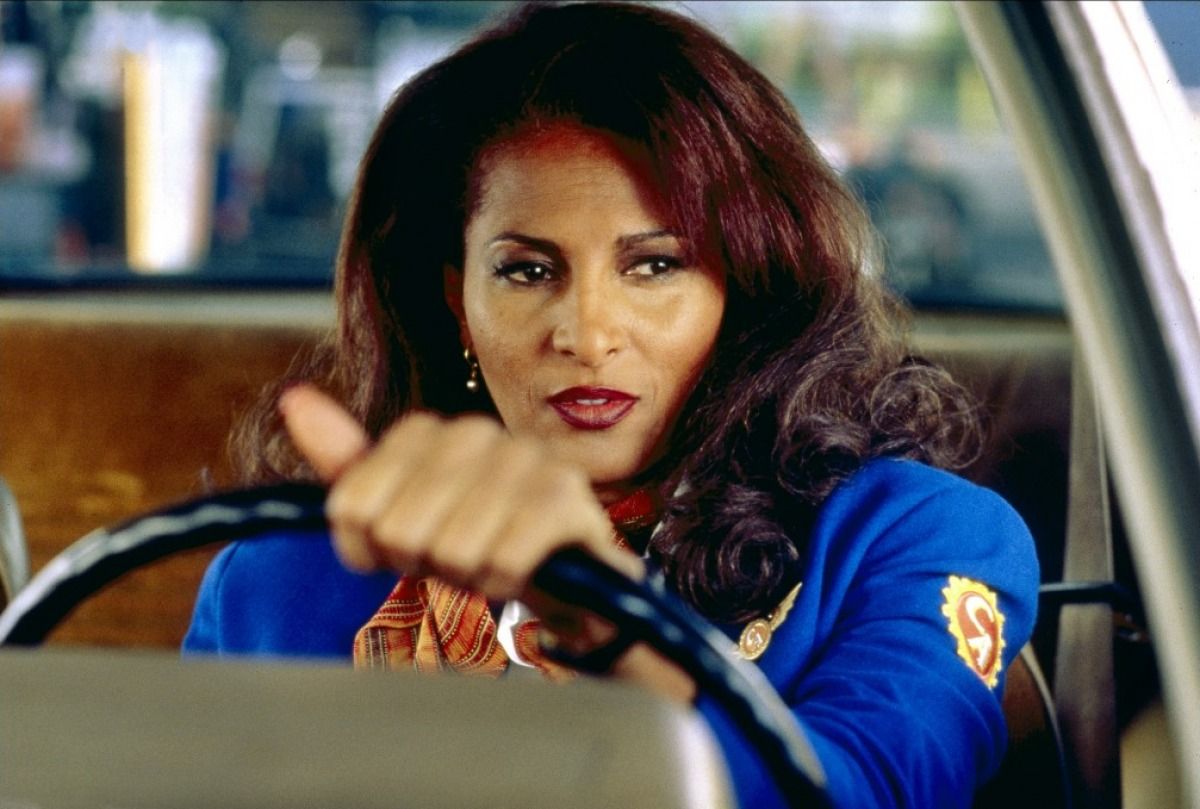Ever since he burst on the scene back in 1992 with Reservoir Dogs, Quentin Tarantino has been one of America’s most notorious and divisive filmmakers. Drawing from an uncanny well of knowledge, Tarantino went from a screenwriter to a director with a voice and style all his own despite spawning plenty of imitators. While some just saw Tarantino’s movies as nothing but banter and violence, his movies frequently have more on their minds regarding observation, consequence, morality, and civilization. He may go for a laugh in times of war and slavery, but his films have very real stakes and a deep investment in their characters no matter how monstrous those character might be. There’s a reason he and his films have remained a vivid presence in American cinema for over a quarter of a century.
I’ve rewatched all of Tarantino’s theatrically released features and ranked them. While Tarantino qualifies Kill Bill as one movie, until he does a wide release of “The Whole Bloody Affair”, I qualify them as they were made available in wide release and on home entertainment: as two separate pictures.
10) The Hateful Eight
The philosopher Thomas Hobbes wrote that “the life of man, solitary, poore, nasty, brutish, and short." Hobbes would probably be a fan of The Hateful Eight, Tarantino’s meanest, ugliest, most cynical movie by far. The title lets us know we’re not supposed to like these people, and films don’t necessarily need someone to root for as long as the characters are compelling. Tarantino really tests himself with “compelling” as we’re torn between charismatic characters who are also varying degrees of monstrous.
The bleak heart of Hateful Eight is that people will destroy each other, and the only trust is in mutual self-interest. The opening of the movie hammers that hard as John Ruth (Russell) only makes decisions based on whether someone else’s self-interest coincides with his own. There’s no compassion, empathy, or trust—only self-interest, which makes for a cold, small world, which Tarantino chooses to depict with 70mm for some bizarre reason. The epic scope, both visually and in terms of narrative, ends up working against the mean little narrative Tarantino concocts, turning what should be a punchy thriller into a meandering slog.
What’s so frustrating about Hateful Eight is that its themes are painfully relevant, and they feel like a continuation of the fascinating racial power dynamics Tarantino explored in Django Unchained. But the trappings of the film feel like overindulging the writer-director so that on repeat viewings, Hateful Eight loses all its tension. Yes, it makes sense for Ruth to introduce himself to everyone at Minnie’s Haberdashery, but it takes forever and that kind of slow pacing turns a languid story into a lethargic one. I don’t dislike Hateful Eight, but it’s the only Tarantino movie I have no desire to ever revisit.
9) Death Proof
There are some things I really love about Death Proof, Tarantino’s half of the 2007 double-feature Grindhouse he made with Robert Rodriguez. I love how it inverts the predator-prey relationship between its two halves, which are bridged with a truly shocking death scene. Tarantino spends the entire first half making you invested in this trio of women and their journey and as individuals. You may not think they’re great people, but you buy them as folks with their own journeys and dreams. And then along comes Stuntman Mike (Kurt Russell)—charming, powerful, and dangerous—to up and murder the people we thought were the leads of our story. We then switch over to four women we’ve never met before, but this time around, Tarantino inverts it so that not only does Stuntman Mike not get away with killing them, he’s exposed for the coward that he is.
My main issue with Death Proof is that it feels muddled by being part of Grindhouse. The first half of the movie seems like Tarantino is still playing by the rules of the game with the damaged film, the abrupt editing, the “missing” reel, etc. But by the time you get to the second half of the movie, those nods are largely absent. Now Tarantino is playing it straight, and maybe that’s because he’s inverting the typical grindhouse movie or perhaps he’s just more interested in telling this story so he dispenses with the distraction of fake film damage, but either way, what had been a foundational element at the beginning is discarded to start over again, much like the narrative itself. From a story perspective, it works, but tonally, it feels discordant with the overall “grindhouse” element.
There are also some bumpy elements along the way, like how its female empowerment message is undermined by Abernathy (Rosario Dawson) and friends leaving Lee (Mary Elizabeth Winstead) behind with the creepy Jasper (Jonathan Loughran), or how it’s tough to divorce Tarantino’s visual obsession with feet from the horrific crash than ends up with a severed leg. And then there’s the whole confessional quality of the thing. There was a car stunt on Kill Bill that went bad, severely injured Uma Thurman, and then Tarantino used her stunt double, Zoe Bell, in an epic set piece involving a dangerous car stunt in Death Proof. It’s both confessional and sublimated as Tarantino admits through film what he wouldn’t admit in print for over a decade afterwards.
8) Kill Bill Vol. 1
As a straight action movie that’s light on subtext, Kill Bill Vol. 1 is a lot of fun. It’s pretty much a cartoon and a love-letter to Japanese action films. It’s dazzling to watch in term of the action choreography, it has some of the best needledrops in all of Tarantino’s filmography, and there’s a joyousness to it despite the cold-blooded revenge running through its veins. It also proves that Uma Thurman (and her stuntwoman Zoe Bell) is one of the best action stars of the 21st century even if no other director could figure that out.
The problem with Vol. 1 is that all of the emotional heft and payoff is in Vol. 2, so really in the first volume you just have the Joy of Revenge. The Bride’s quest is rarely questioned, so we’re just on this joyride of murder. To be fair, Tarantino does drop hints about the emptiness of revenge along the way from Vernita’s daughter witnessing her mother’s death to O-Ren, her own journey of revenge taking her all the way to the top of Tokyo’s crime world only to be felled by someone on their own path of vengeance. But these are more blips than the real reckoning that comes with the Bride’s journey.
That’s the difficult thing about the Kill Bill movies is that in some ways, they are drastically distinct. There’s no confusing the two in terms of style or tone, but in terms of narrative, you need Volume 2 to pay off Volume 1 because on its own, Volume 1 is just a lot of gleeful violence without the emotional heft that you see in Tarantino’s “complete” movies. Thurman does her best to bring that gravitas, and the scene where she reaches for her lost pregnancy is devastating. But all of that stuff gets kind of lost in between Gogo Yubari (Chiaki Kuriyama) tossing around a murderball and the gallons of blood that get sprayed all over the House of Blue Leaves.
7) Kill Bill Vol. 2
Although it still has a couple action beats, I’m still amazed at how different Volume 2 is from Volume 1. Whereas Volume 1 drives hard on the action, Volume 2 is largely conversational. But you can also see the full shape of the movie, and what Tarantino has attempted is somewhat experimental. He’s attempting to tell Beatrix Kiddo’s story without Beatrix ever doing anything other than driving for revenge. Instead, she remains a bit of a cipher, and the people she defeats tell us about her. Killing Vernita (Vivica A. Fox) tells us that Beatrix doesn’t care about family since that life was (seemingly) ripped away from her. O-ren’s (Lucy Liu) backstory probably bears some similarity to Beatrix’s and shows what Beatrix would be capable of if she wanted to be an underworld kingpin.
But when you get to Volume 2, things start getting introspective. The movie starts leaning heavily on mirrors with the relationship between Budd and Bill (the pair being brothers) and Elle and Beatrix. Budd is kind of a pathetic creature. He’s lazy, indifferent, and selfish, and he’s probably a good stand-in for how Beatrix thinks of Bill before they come back together in the final act. Meanwhile, Elle is all of Beatrix’s rage, and she has to leave that part of herself behind—screaming, cursing, and blind—before she can finish her quest.
There are still campy touches throughout that harken back to the cheesy martial arts movies Tarantino clearly loves, but I appreciate that Volume 2 really tries to dive into the relationship between Bill and Beatrix to show how it’s both fundamentally broken and yet love remains between these two people as twisted as it may be. I still think the movie could reach further beyond its genre influences, and at times it gets caught between indulging the revenge movie and deconstructing it, but at least Volume 2 is has some character subtext to chew on and offers more than just splatter.
6) Once Upon a Time in...Hollywood
This is the closest Tarantino has ever come to making a hangout movie. Unlike his other films, no one here is in a hurry to get anywhere. All the dramatic tension comes from the Manson Family lurking at the edges of the narrative, but the focus of the story is really on three people just trying to make their way in 1969 Los Angeles. You’ve got Rick Dalton (Leonardo DiCaprio), a washed-up TV actor struggling to find whatever parts he can; Cliff Booth (Brad Pitt), Rick’s amiable stunt double who has been drubbed out of the industry for his own reasons; and Sharon Tate (Margot Robbie), who represents the future of Hollywood and, as history tells us, a future that was never realized because she, along with three of her friends and her unborn child, were slaughtered by the Manson Family.
For Tarantino, Once Upon a Time in…Hollywood represents a last hurrah of sorts, and it’s clear he’s looking at the industry’s upheaval today to the transitions of 1969. You can feel the kinship he has for Rick and Cliff, and while there’s no enmity towards Sharon, he also keeps her at a distance. We never really learn who she is or what she wants beyond being a rising star and a pleasant person, and so our loyalties are with Rick and Cliff, old-timers who are seeing the world pass them by and want to find a way to keep doing what they love. And the film just kind of ambles around them in a way that may not have much momentum but is still pleasant and enjoyable.
But there’s still the Sharon Tate of it all, and that’s where I get hung up with this movie. Maybe it will work better on repeat viewings, but for now, the ending sticks in my craw. It's clear that Tarantino doesn’t quite know how to resolve the ugly reality with his pleasant Hollywood, so he opts for the fairy tale, which has its advantages, but also comes with a guilty feeling. Once Upon a Time in…Hollywood is always asking you to escape into Tarantino’s id, but by the time the film reaches its closing credits, you feel like you’ve overstayed your welcome.
5) Django Unchained
Django Unchained is the first film Tarantino made without his longtime editor Sally Menke, who sadly passed away in 2010. You can feel her absence as Unchained just isn’t quite as tight as Tarantino’s other movies. At two hours and forty-five minutes, this was Tarantino’s longest film to date, and while there’s no scene that deserves to be outright cut (some would argue that it’s the bag scene, but I would miss the hilarity and how it ties into the film’s larger themes), it’s a movie that really relishes the length of scenes and every shot to where the film starts to lose its urgency.
Thankfully, Django has some of Tarantino’s strongest thematic work as he pinpoints racial power dynamics with the trappings of a spaghetti western. The film is fascinated with what it means to be “civilized”, constantly tearing away at the societal norms that go unquestioned. Even the heroic Dr. King Schultz (Waltz) engages in a barbaric practice of murder, but since that murder is sanctioned by the state, he’s not only free to do it, but gets paid handsomely. The movie operates on the obvious that slavery is bad, but looks to explore who benefits from it and sees an entire rotten society where you may have a guy like Calvin Candie (Leonardo DiCaprio) at the top, but everyone from his lawyer (Dennis Christopher) to the lowly dog-handler (David Steen) needs this oppressive racial caste to exist.
Django (Jamie Foxx) is a revolutionary character because he exists outside these bounds, broken free from slavery and then given the tools to enact his purpose of saving his wife Broomhilda (Kerry Washington). While the rest of the characters wallow in the muck of American society, Django is rendered into a mythic figure, exceptional by all standards and who knows that the only way to deal with such a corrupt society is to burn it all down.
4) Reservoir Dogs
Most directors would settle for making a movie as good as Reservoir Dogs in their entire filmography let alone having it be their feature debut. For Tarantino, it’s not his best, but you couldn’t ask for a more confident and assured introduction. It’s got all of the hallmarks that Tarantino would become known for, but it hits at themes that Tarantino would return to as he focuses power dynamics, masculinity, and self-destruction.
Of course, those are the elements that don’t really jump out at you at first. What you notice are cool guys in cool suits talking like we wish we could with our friends. There’s definitely some overcompensation here with Tarantino’s opening bit about what “Like a Virgin” is really about (a tendency he quickly outgrew, thankfully), but the film works beautifully because rather than holding up his group of thieves as the epitome of cool, he’s made a movie about tearing them down. It’s not a mistake that the film opens with the guys laughing, joshing, throwing around lines like, “You shoot me in a dream you better wake up and apologize,” and in the next scene one of them is crying out in pain and bleeding to death.
What Reservoir Dogs does, and what both Tarantino’s fans and detractors miss, is that beneath the swearing, quick-witted dialogue, terrific needledrops, and excellent performances, is that Tarantino does not admire these kinds of characters. He sees them as tragic at best and grotesque at worst. The line between a Mr. White (Harvey Keitel), who doesn’t think cops count as “real people”, and Mr. Blonde (Michael Madsen), who is willing to torture a cop just for fun, isn’t all that distinct. They’re a bunch of murderers and crooks, and while you can protest otherwise—the comical protestations of “I’m a professional!” from Mr. Pink (Steve Buscemi) illustrate this futility—at the end they’re all dead or captured. To quote Freddy Newandyke (Tim Roth), “They don't know. They don't know shit…They believe every fucking word ‘cause you’re super cool.”
3) Pulp Fiction
The film that made Tarantino a household name is still a landmark, and for good reason. In many ways, it feels like Tarantino refines and expands upon the talent he showed in Reservoir Dogs. You’ve still got criminals in the black-and-white suits and they’re still shooting the shit on their way to do crimes, but there’s more depth and nuance to Jules (Samuel L. Jackson in the role that should have won him an Oscar, no disrespect to that year’s Best Supporting Actor winner, Martin Landau) and Vincent (John Travolta) than any of the crooks from Tarantino’s first feature.
A second feature shouldn’t be as brash and confident as Pulp Fiction, but Tarantino knows exactly what he wants to do and has no reservations pushing his style. It’s a movie that’s constantly throwing curveballs at the audience, but that’s kind of the point. Every major character in this movie thinks they have things totally figured out and knows how the game is played. They’re completely confident in their lifestyle and what they do, and then Tarantino comes along to mess it all up and see what these characters are really about.
That’s why the ending of the film is one of my favorite scenes of all time. You finally have one of the characters, Jules, examining his posturing and realizing that he doesn’t have everything figured out and that he has to find a new path. It ends the movie on such a high note that it makes me forget the weaknesses of “The Gold Watch”, which has a crackerjack opener with Christopher Walken’s monologue, but I can never get on board with Butch (Bruce Willis), whose journey always comes off as selfish and then carries some icky racial power dynamics when he rescues Marcellus (Ving Rhames). It’s a noticeable stumble in a film that’s usually sure-footed.
2) Inglourious Basterds
The first of Tarantino’s movies to rewrite history, Inglourious Basterds shows a remarkable amount of maturity from the director while still maintaining his voice and style. It’s a film that’s far more controlled and willing to luxuriate in long conversations. It uses notions of observed and unobserved (everyone is putting on a show for others in this film) to ultimately make a movie about movies. And yet that never feels cavalier in its World War II setting. Tarantino knows how gruesome and ugly war—and especially the Holocaust—can be, but rather than show those directly, he chooses to dive into the power dynamics that can be destroyed through performance.
What makes Inglourious so riveting is that you have Tarantino playing to his strengths, but clearly taking his game to the next level. The opening conversation between Hans Landa (Christoph Waltz) and the dairy farmer (Denis Ménochet) is so tense that you forget to breathe until it’s over. And then Tarantino provides a nice reprieve with the Basterds and one of Brad Pitt’s best performances as Lt. Aldo Raine. But it’s fascinating to watch the film continually layer over itself and see how depictions are made (the basterds leaving a massacre in their wake) and obliterated (the simple act of raising the wrong three fingers).
And yet the heart of the film is Shoshanna (Mélanie Laurent), a Jewish woman passing as gentile who not only wins the war (the joke becomes that the basterds’ work is literal and figurative overkill), but also shows the enduring power of cinema. Even after she’s dead, her ghostly face laughs over her victims, showing them “the face of Jewish vengeance,” as they burn alive. For Tarantino, there’s no more potent symbol than using cinema to defeat one’s enemies and letting that legacy endure.
1) Jackie Brown
Tarantino’s detractors will say it’s telling that his best movie is an adaptation, but I’d counter that Jackie Brown shows a remarkable amount of daring from the director. Yes, it’s based off Elmore Leonard’s novel Rum Punch, but it’s still unmistakably a Tarantino movie while also pushing the director out of his comfort zone. While I’m sure there was a temptation for more-of-the-same following the massive success of Pulp Fiction, Tarantino went in a drastically different direction while still retaining themes he explored in his first two features.
What’s immediately noticeable about Jackie Brown is how Tarantino readjusts his entire style because instead of taking cool people and tearing them down, his protagonist is an underdog who’s going to show she’s the coolest person in the whole movie. That means there needs to be a balancing act showing Jackie (Pam Grier giving an incredible performance) as overwhelmed and downtrodden, but also confident enough that she can pull off a fairly complex caper. The opening credits of the movie speak volumes, almost telling you Jackie’s life story without a single line of dialogue as she’s carried along, then going against the grain (a brilliant shot with Jackie going in one direction and all the extras walking in another) before rushing to make her gate, showing she’s struggling just to keep up these days. That kind of masterful direction carries throughout Jackie Brown.
But what makes Jackie Brown so special is that it’s a romance. Sure, you’ve still got some violence and Ordell (Samuel L. Jackson) dropping the n-word, but at the heart of the movie is the relationship between Jackie and Max Cherry (Robert Forster). Up to this point, Tarantino had written characters who grabbed your attention, but they weren’t people you could genuinely root for. The relationship between Jackie and Max is what gets you cheering, and it’s part of what makes the ending so heartbreaking as you have two people who are old enough to know they want different things, and know that they can’t ask the other one to give up what they want. It’s beautiful.

